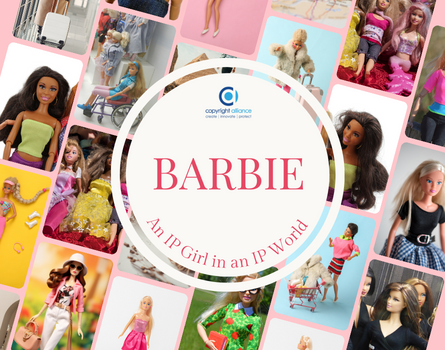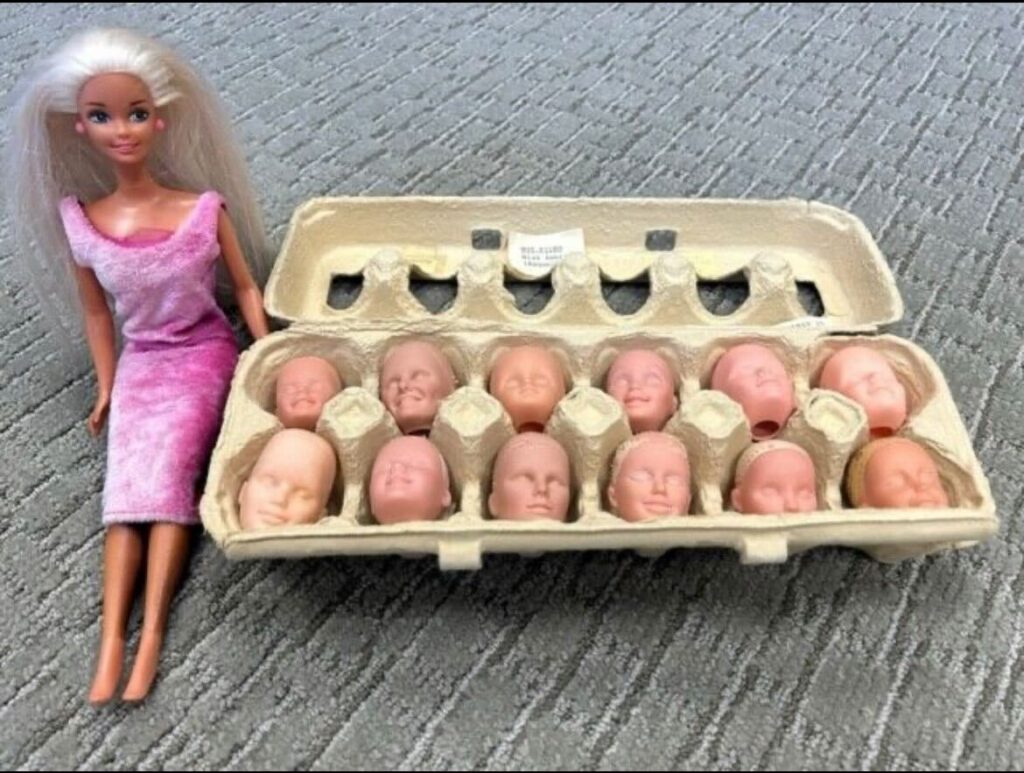Barbie: An IP Girl in an IP World

All the hoopla surrounding the new Barbie movie has awoken a distant Barbie memory for me. No, not that type of memory (I was more of a superhero action figure guy myself). This Barbie memory deals with an over thirty-year-old copyright-infringement dispute.
In the mid ’90s, I worked as an associate doing copyright work at the law firm of Finnegan, Henderson, Farabow, Garrett & Dunner. On my first day, I walked into the office of Art Levine, Finnegan’s resident copyright expert. In addition to his illustrious career at Finnegan, anyone who knows Art professionally, associates him with three things: (i) his tremendous work at the U.S. Copyright Office as both the Assistant Chief of Examining and as the Executive Director of the National Commission on New Technological Uses of Copyrighted Works (CONTU); (ii) his really good jokes (I say “really good” here only because I know Art will be reading this); and (iii) for his collection of shaved doll heads that he kept in an egg carton in his office.
So, on this day—after telling me what happened when a priest, a minister, and a rabbi walk into a bar—Art bent down and removed the egg carton from one of his office cabinets and put it on his desk. After I picked my jaw up off the ground, he then proceeded to regale me with the story of why he had this collection of shaved doll heads. As the Barbie movie heats up the theaters this summer, this seems like the perfect time to re-tell this story and how critical strong copyright laws are to the creativity of the franchises and stories we know and love.
Barbie Goes Head-to-Head with Miss America
The story begins when the Miss America Organization teamed up with Kenner Products, a manufacturer, to create a line of fashion dolls named “Devon,” “Tonya,” “Justine,” and “Raquel.” The profits from doll sales were to go to Kenner and to fund the Miss America pageant scholarships. Kenner first introduced the line of dolls at a toy fair in New York in February 1991—and the dolls were a hit. The manufacturer received customer orders valued at over ten million dollars and began placing the line of dolls in retail stores later that same month.
Mattel caught wind of the Kenner dolls, and in late March 1991, sought an exclusion order from U.S. Customs to detain the dolls in the importation process from China on the grounds that the Kenner dolls infringed Mattel’s copyright in the Barbie doll—specifically the copyright to an unpainted head sculpture of “Super Star Barbie.” Customs agreed that there was a “suspicion” of infringement (which is the statutory standard necessary to invoke customs detention proceedings), and detained further shipments of the dolls.
Kenner and the Miss America Organization then immediately sued Mattel in the Southern District of New York, seeking a declaratory judgment that the dolls did not infringe Mattel’s copyright in the Barbie doll, and requested a stay of the exclusion order and a permanent injunction to prevent Mattel from further interfering with the marketing and sales of the Kenner dolls. The plaintiffs were represented by Carol Simkin from Weiss Dawid Fross Zelnick Lehrman, P.C., Mattel was represented by Art Levine from Finnegan, and U.S. Customs was represented by Sara Shudofsky, Assistant U.S. Attorney. The court denied the plaintiffs’ requests.
Though the federal court case was decided primarily on administrative law issues relating to the exhaustion of administrative remedies, on the copyright side of the dispute Mattel’s infringement claims pitted the protectable features in Mattel’s Barbie head sculpture to the features of the head sculptures of the “Tonya” and “Devon” figures in Kenner’s doll line.

To demonstrate that the doll heads were infringing and that Kenner could have chosen a different design for the Miss America doll heads, (as Art tells it) paralegals from the Finnegan firm procured numerous twelve-inch dolls from various toy stores in the Washington D.C. area and then sat in a conference room removing the makeup from the dolls and shaving their heads in barbaric (or is it barbie-ric?) fashion much like a scene from a movie about a serial killer.
It then “seemed natural” to transport the heads in an egg carton. Ultimately, because the case was decided on exhaustion principles, the shaved doll heads were never introduced in court.
The case then moved quickly through U.S. Customs which reaffirmed its findings in April. Plaintiffs eventually appealed the decision to the Second Circuit Court of Appeals, but the appellate court did not buy plaintiffs’ argument that the reputation of former Miss America winners and contestants would be harmed by the exclusion order and reaffirmed the district court ruling.
Subsequently, in a different case, the federal courts did get to opine on the protectability of Barbie. The Second Circuit Court of Appeals issued its opinion in Mattel, inc. v. Goldberger Doll Manufacturing Co., supporting Mattel’s assertion of its copyright in the Barbie doll. The lawsuit involved the Radio City Rockettes, releasing a Rockette 2000 doll to celebrate the millennium. Mattel thought the doll looked similar to the facial features of the “Neptune’s Daughter” Barbie and “CEO Barbie,” and sued the Rockette doll manufacturer. Although the court did not opine on whether the Rockette doll infringed on these Barbie dolls, it supported Mattel’s assertion in its Barbie doll copyrights, stating:
“Mattel’s evidence showed that it frequently produces revisions and adjustments to the particular realization of the Barbie face in an effort to continue to appeal to its young customers, as their tastes change with time. It is entitled by its copyright not to have its design copied by competitors.”
As such, the court held that Mattel’s particularized expressions of common doll features of an upturned nose, widely spaced eyes, and bow lips in the form of Barbie’s face, was protectable under copyright law because it met the originality requirement for copyright protection. The court also stressed the longstanding copyright principle that a copyright owner’s particular expression of ideas is what the Copyright Act was designed to protect.
Fueled by Copyright Law, Barbie Continues to Thrive
It’s clear that Barbie is enjoying her moment in popular culture. In large part, this is due to the copyright laws that helped Mattel protect and continue innovating Barbie dolls over decades to create and distribute millions of various Barbie iterations to children all over the world. Barbie’s reliance on copyright is also evident in that the toy has spawned countless television shows, books, and other creative works to children who cannot get enough of the multi-talented figure. Strong copyright laws, in which creativity is recognized, protected, and enforced, is what drives Barbie and so many other recognizable franchises and brands for fans of all ages to enjoy. If anything, Barbie’s forays into copyright issues over the years have only solidified her status as an IP girl in an IP world.
If you aren’t already a member of the Copyright Alliance, you can join today by completing our Individual Creator Members membership form! Members gain access to monthly newsletters, educational webinars, and so much more — all for free!

